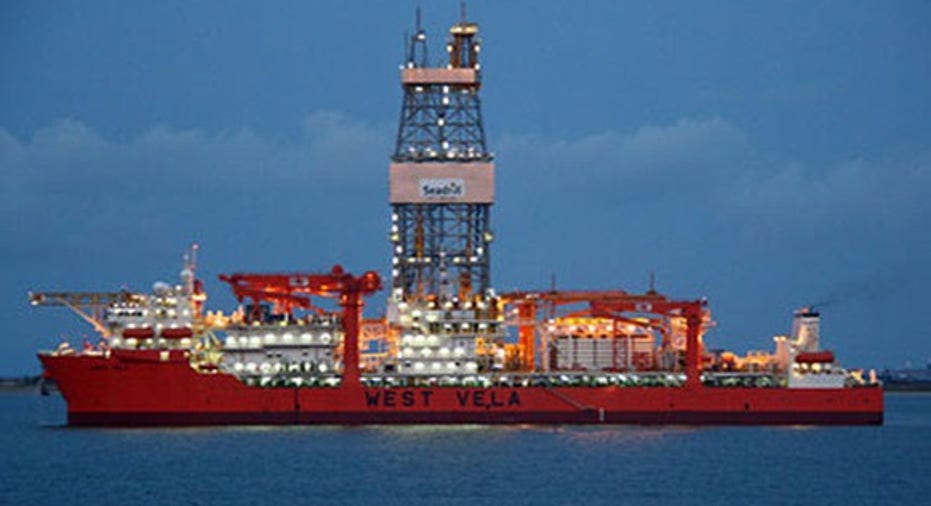Can Investors Buy Seadrill Partners in Good Conscience?

Image source: Seadrill Partners.
If you want to make a long-term investment in a company that operates in a poorly performing industry, you have to be prepared for some short-term turbulence. Seadrill Partners (NYSE: SDLP), which contracts out rigs for deep-sea drilling, is one such company. Over the past month, the stock has fallen nearly 40%, and double-digit percentage swings on any given day are not uncommon. This type of volatility is difficult to stomach for even the most savvy of investors.
If this volatility persists, is there an opportunity for long term investors?
Why the volatility?
Seadrill Partners' stock price volatility can be almost entirely blamed on the oil price crash. When prices began to drop in 2014, upstream oil companies had to make cutbacks. Active rig counts, both onshore and offshore, dropped precipitously as many drilling locations lost economic viability. Although prices have begun to slightly recover -- today hovering above $45 per barrel -- they have not yet reached levels high enough for oil producers to feel comfortable returning to pre-crash expenditures.
These cuts have directly impacted Seadrill Partners. As of July 26, two rig contracts in 2016 had been cancelled, and another was put on extended standby. Because of this reality, the company decided to cut its distribution from $0.25 to $0.10 for the latest quarter. As expected, investors weren't pleased and sent the stock plummeting.
The company touts that it has 64% of its rigs on contract through 2017 and has $3.4 billion in backlog on contracts that average 2.7 years. But here's the problem: In its first-quarter report, the company admits the environment is challenging and expects further market contraction until 2018. As its current contracts end, it needs new contracts to sustain its positive earnings. It has yet to show how or when it will secure these contracts.
Buying opportunity?
Here's where we need to look beyond the oil price crash, though, and make two key determinations. One, is Seadrill Partners is well-positioned to ride out a prolonged crash? And two, is now actually a good time to buy based on that growth potential?
New contracts have been difficult to secure throughout the industry. So, let's make an assumption. At some point -- maybe this year, maybe in a couple of years -- oil prices will recover. When those prices recover, there is simply too much oil in deepwater locations for oil companies to ignore. Seadrill Partners will, at some point, pick up new contracts.
Until that moment comes, as mentioned, the company has $3.4 billion in backlog through 2020 to sustain itself. Further, by cutting its distribution -- although this was not received well by investors -- it did in fact help shore up its cash situation. At the end of the first quarter, it distributed $18.8 million from its distributable cash flow of $99.2 million, which were virtually identical to one year ago. Cutting the distribution enables the company to build more cash on hand and cover capital obligations, such as its current portion of long-term debt that stood at $93 million at the end of the first quarter. Staying on top of its debt is important, as long-term it balloons to over $3.4 billion.
With its second-quarter EBITDA (earnings before interest, taxes, depreciation, and amortization) expected to outpace that of its first quarter, Seadrill Partners is proving it can ride out the difficult operating environment. On top of that, because of the recent price drop, the stock appears remarkably cheap. It's trailing price-to-earnings ratio of 1.6 is considerably lower than that of competitors, such as Transocean's 3.1, but it remains positive, which is more than even its own parent company, Seadrill Limited (NYSE: SDRL), can say.
Speaking of Seadrill Limited, we have to consider the possibility that the company will look to reacquire its position in Seadrill Partners to consolidate its cash generation. Based on its first quarter cash and cash equivalents of over $1 billion and a reduction in vessel and rig operating costs of $79 million, I think it's unlikely to go the route of company consolidation. This is worth monitoring, though, particularly if both companies begin to lose more contracts and look for ways to cut down on expenditures.
Investor takeaway
Seadrill Partners is scheduled to release its second-quarter earnings on August 25. That will provide some additional clarity on the company's outlook. Based on the current market conditions, the risk remains high that additional contracts will be cancelled between now and 2020. That risk, though, remains a threat to the industry as a whole. For long term investors, only the only the bravest, most venturesome investors should be looking at this stock because of the short term risks. That being said, it is acheap stock that has shown so far it can maintain profitability in a difficult environment.
A secret billion-dollar stock opportunity The world's biggest tech company forgot to show you something, but a few Wall Street analysts and the Fool didn't miss a beat: There's a small company that's powering their brand-new gadgets and the coming revolution in technology. And we think its stock price has nearly unlimited room to run for early, in-the-know investors! To be one of them, just click here.
David Lettis has no position in any stocks mentioned. The Motley Fool has no position in any of the stocks mentioned. Try any of our Foolish newsletter services free for 30 days. We Fools may not all hold the same opinions, but we all believe that considering a diverse range of insights makes us better investors. The Motley Fool has a disclosure policy.



















